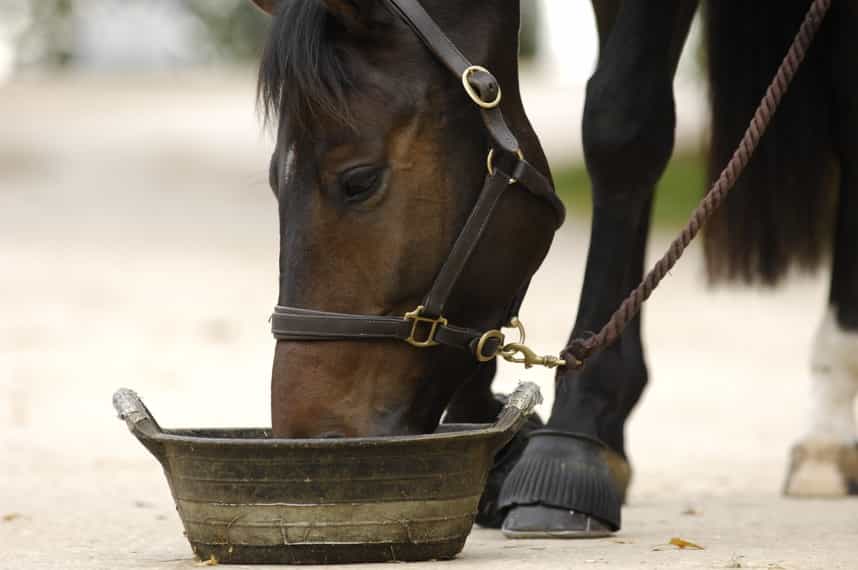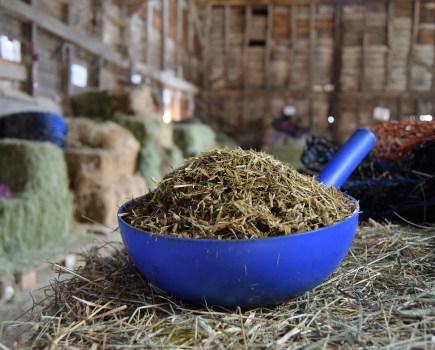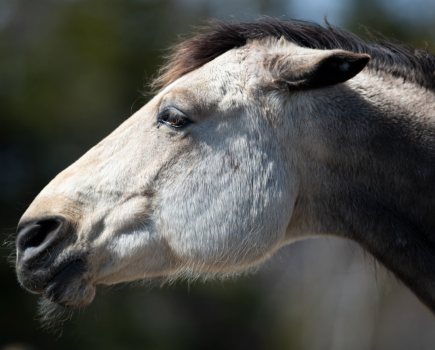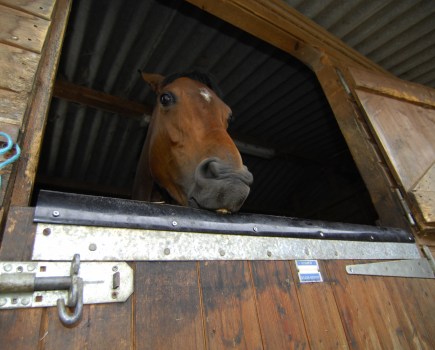Every good piece of content you read about feeding a horse will tell you that forage should be at the centre of every horse’s diet, and these are primarily sources of fibre. Fibre comes in a number of different feed sources and it has an important role in keeping your horse’s digestive system working, in turn keeping them in overall top health and looking well too. With forage and fibre as the core of your horse’s diet, you then add what you need to fulfil your horse’s extra requirements, such as more energy (calories) to fuel hard workloads or extra oil for those horses who struggle to hold condition.
Fibre in feed is often seen as just a filler, but it can be much more than that. Fermentable, highly-digestible fibre sources such as alfalfa and soya hulls can make a safe contribution to energy needs. Fibre is fermented in the hindgut relatively slowly, so it doesn’t cause the peaks and troughs in blood glucose that some horses may react to and cause fizzy or excitable behaviour.
According to Spillers registered nutritionist Clare Barfoot, fibre is important to your horse for two main reasons:
- From a physical point of view, 65% of your horse’s digestive system (the hindgut) is devoted to processing fibre.
- From a psychological point of view, your horse has evolved to eat for approximately 16-18 hours of every day. In the wild, this diet would have comprised of grasses, herbs, plants and shrubs.
Forms of fibre
Fibre provides slow-release energy while filling your horse’s gut and can be fed in a number of forms. These include:
Hay/haylage and grass
Hay or haylage, alongside grass, will be the largest supplier of fibre in your horse’s diet. The quality of the hay you feed and how much grass is in your horse’s field will affect how nutritious, and therefore calorific, this form of fibre is, but there are things you can do to manage this so that your horse continues to have access to forage (and therefore fibre) in order to keep their gut healthy.
Chaffs
Chaff products have always played a big part in feeding a horse as chopped straw and hay were traditionally used to bulk up feeds. There are many chaff products available on the market, including molassed and non-molassed varieties which can be fed easily as a natural source of fibre.
A feed that is 100% grass with nothing added can be fed as a chaff to slow down quick eaters and is also a fantastic way to disguise supplements or medications in feed. Alternatively, this type of fibre feed can be fed in larger quantities to enhance or completely replace your horse’s forage ration, for example if you have an elderly horse or one with poor teeth who struggles to chew forage.
Straw
Many people think feeding straw is an absolute no no, but it does have a role in a horse’s diet and for most horses it is not unsafe to include some straw in their bucket feed. Nutritionally improved oat straw is usually in the form of high fibre pellets (fed alone or as part of a compound feed) and also in some chaff products. Alfalfa is a legume related to the pea and bean family. The dried leaves and stalks of the alfalfa plant provide fibre, energy, quality protein and vitamins A, B and E.
Sugar beet
Sugar beet is a great fibre provider when given to horses to eat and it can be bought in many forms. Due to its ability to absorb water, sugar beet cubes and pellets must be soaked so that they’re safe to feed to horses — always follow the instructions on the feedbag. Without soaking, sugar beet could be the cause of choke, colic or swelling of the horse’s stomach. However, compound feeds containing sugar beet are safe to feed without soaking.
Clare advises that sugar beet cubes or pellets should be soaked for 24 hours, and shreds for 12 hours. Flakes such as Speedi-Beet flakes should be soaked for 10 minutes. While sugar beet is nothing new, ‘quick soak’ sugar beet is. Like normal sugar beet, it’s high in fibre, palatable and a great form of slow-release energy as well as boosting a horse’s hydration levels, but it’s so much quicker to prepare. With the hustle and bustle of everyday life it’s sometimes not ideal to have to wait 24 or even 12 hours for your sugar beet to soak.
Feeding fibre for gastric ulcers
Forage and fibre are key to reducing the risk of gastric ulcers, often referred to as equine gastric ulcer syndrome (EGUS), in a horse. Gastric ulcers usually occur as a result of a horse’s stomach lining being exposed to gastric acid over a long period of time. When you exercise your horse and the intensity of that exercise is an influencing factor on gastric ulcers, as is the time of day you feed. The best way to protect this lining is to limit its exposure to gastric acid. Nature’s way of doing this is by the buffering action of saliva, which is produced when your horse chews.
This is why allowing your horse to graze for the bulk of each day is so beneficial. As your horse chews their forage they produce lots of saliva to act as a buffer in their stomach. It can also help to add chopped fibre to any bucket feeds to help extend a horse’s eating time. Alfalfa is particularly useful for this as its high protein and calcium content helps to provide a further buffering effect against the potentially harmful stomach acid.
Feeding plenty of forage will help to provide a protective mat on top of the contents of your horse’s stomach, helping to prevent gastric acid splashing on to the upper stomach region. Another thing to consider is the length of time your horse is left without fibre. Don’t leave them for more than six hours without any hay, haylage or grass, and allow them access to it before exercising to help maintain the protective fibre ‘mat’ in his stomach.
Feeding fibre for condition
Supplying extra energy in your horse’s diet from fibre and oil rather than cereals allows energy to be released and used more slowly, helping to reduce the risk of excitable behaviour in horses. It’s also great way to help build condition and shine, safely, explains Clare. Oil can be used to top up the calorie level in the diet – it contains 2.5 times more energy than the same weight of cereals and it’s digested very efficiently. By fine-tuning the fibre and oil blend, you can deliver exactly the right type of energy your horse needs, when they need it. This approach to feeding will also improve your horse’s health, quality of life and coat shine.
Clare’s tips for choosing fibre-based conditioning feeds are:
- Look out for feeds that contain extra oil and that supply optimum levels of vitamins especially vitamin E, which is needed when you’re feeding higher levels of oil.
- Feeds containing chelated trace elements such as zinc and copper may also help promote coat condition in horses.
- Choose a fibre feed with added oil to increase calorific intake.
Love hacking? Join our free #Hack1000Miles challenge and see how far you can go!
Subscribe to Your Horse Magazine – the perfect Christmas gift!










